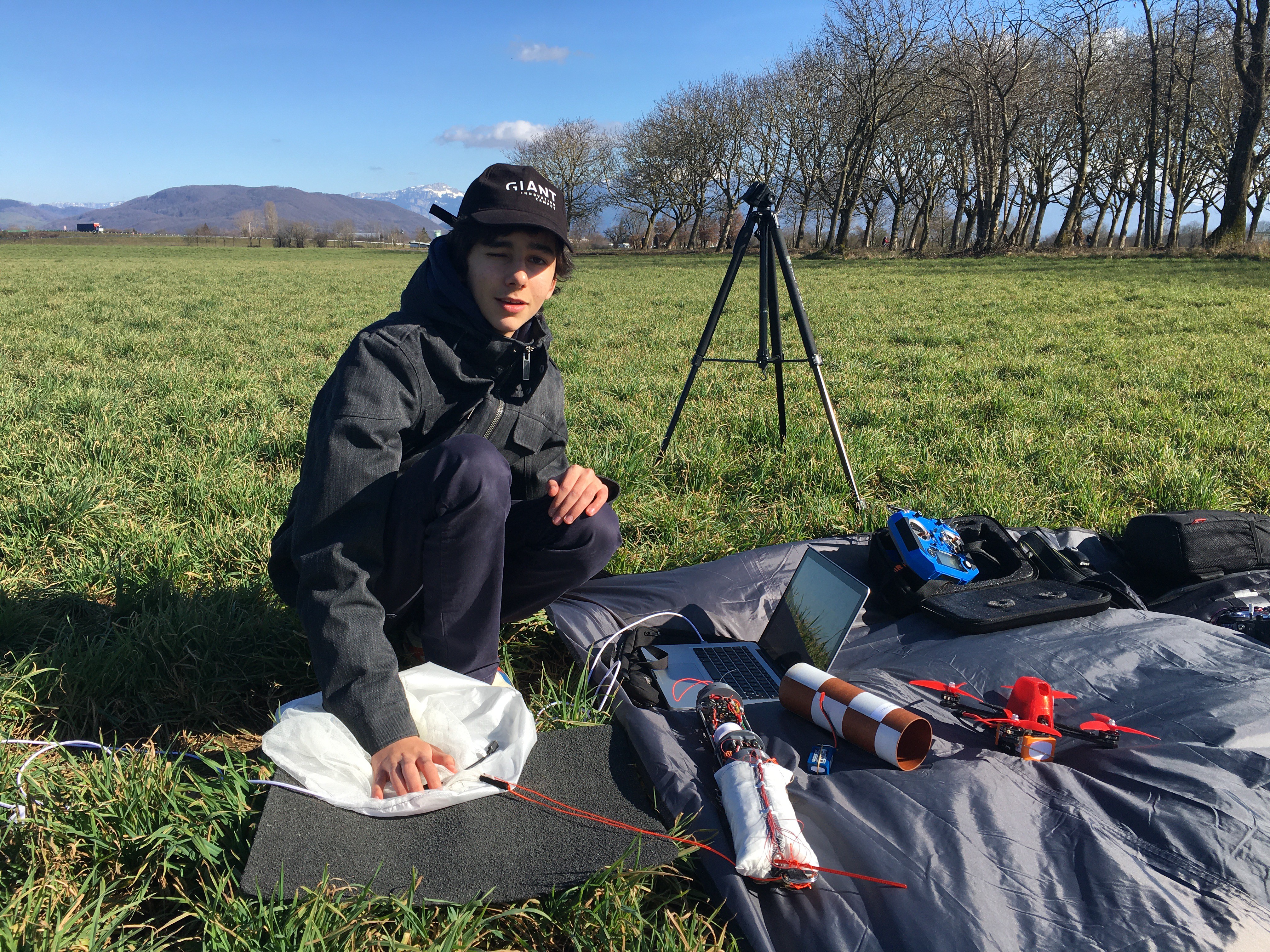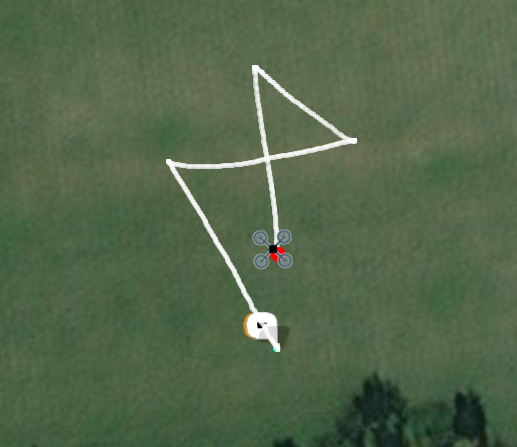Hi there!
In France, every 2 months or so there are school holidays,
And for me holidays = parachute test.

But when you do a test, it's because you have something to test, so this time what did we test ?
The weather balloon that we want to recover usually explode at an altitude of 30km, at this altitude there is almost no air. And what we want is to open a parachute that is kind of hard to open, so we are not really in the best conditions to open a parachute at 30km of altitude directly when the balloon explode.
Also, to open the ram-air canopy parachute, we need what we will call an extractor parachute, which is a small round parachute already deployed in the air during the ascent, that will give us during descent, at the chosen moment, the force needed to extract the ram-air canopy from it's deployment bag in which it is folded during ascent.
The last point you need to get, is that it is dangerous and therefore illegal to drop an object in absolute free-fall from any altitude (at least where I am) this is why at any moment of the flight we don't want fall with a velocity >5 m/s
To sum up, we need to open the raim-air parachute canopy at a lower altitude than the ballon burst altitude (30km), we need a small round parachute to open the ram-air canopy, and we don't want at any moment of the flight to fall at a velocity > 5 m/s
And this, is the solution :
I call it the collapsable-dragchute
The idea is that, we need a big enough dragchute to fall with a velocity < 5 m/s before the opening of the ram-air canopy, but we also need it to be as small as possible once the ram-air canopy is opened, because otherwise it will make impossible the flight of the wing.
So to sum up :
After the burst of the balloon, everything come down under this drag-chute, at a velocity < 5 m/s, at the desired altitude (where there is enough air of canopy inflation) the dragchute is used to get the canopy out of it's deployment bag, at the same time, the "collapsing line" of the dragchute il released by a small mechanism, the wing is opened, and the dragchute is collapsed. And everything is perfect !
Well at least in theory, because reality is really hard with concepts that seems so easy :)
So this objectif of this test was :
1. Like each time, get more data on the performance and the flight of the raim-air parachute canopy, see how it react to commands, how it fly with a bit of wind etc etc
2. To test this new concept of collapsable-drogchute
(3. And also last point, get better at organisation of the test flight, with a more "streamlined process", for example with automatic flight mission for the drop drone etc etc..)
And if the first and the third mission have been perfectly accomplished
An example of the data we got from one of the flights :
An example of automatic mission with INAV running on the drop drone

On the second mission, it is unfortunately not a total success, and at this point, the story continue with this video :
As explained in the video, what happened is that we got a tangled dragchute, but what is exactly a tangled dragchute ?
If you take a look closely at the "The solution" video, you will see that to get this collapsable dragchute we need to use two different line, so the dragchute before collapse is connected with two line to the system, and what happened there is that during preparation or during ascent, a part of the parachute got stuck between these 2 different lines, which once the system was released got even more stuck between the lines, because they were under tension due to the low but high enough drag of the tangled dragchute.
So I've tested, I've failed, but now I've learned, we need to find a way to have one and only one line on this collapsable parachute. But we need two of them to make it collapsable, so how is that possible ?
One idea is to get one line into another, like a wire in a tube, but this will be the subject of the next update !
Thanks again for your interest, your support, your ideas, and the motivation you give me by following my (very small) adventure !
Yoyo
 Yohan Hadji
Yohan Hadji
Discussions
Become a Hackaday.io Member
Create an account to leave a comment. Already have an account? Log In.